Trig Identities Challenge Activity
This blog post contains Amazon affiliate links. As an Amazon Associate, I earn a small commission from qualifying purchases.
This past week, my pre-calculus students have been tackling verifying trig identities. I came down with a cold Sunday night, took Monday off at the insistence of my husband, and suffered through the rest of the week. Introducing trig identities while sick and lacking energy/motivation on Tuesday was not my best and brightest idea. So, I spent the rest of the week trying to make up for it.
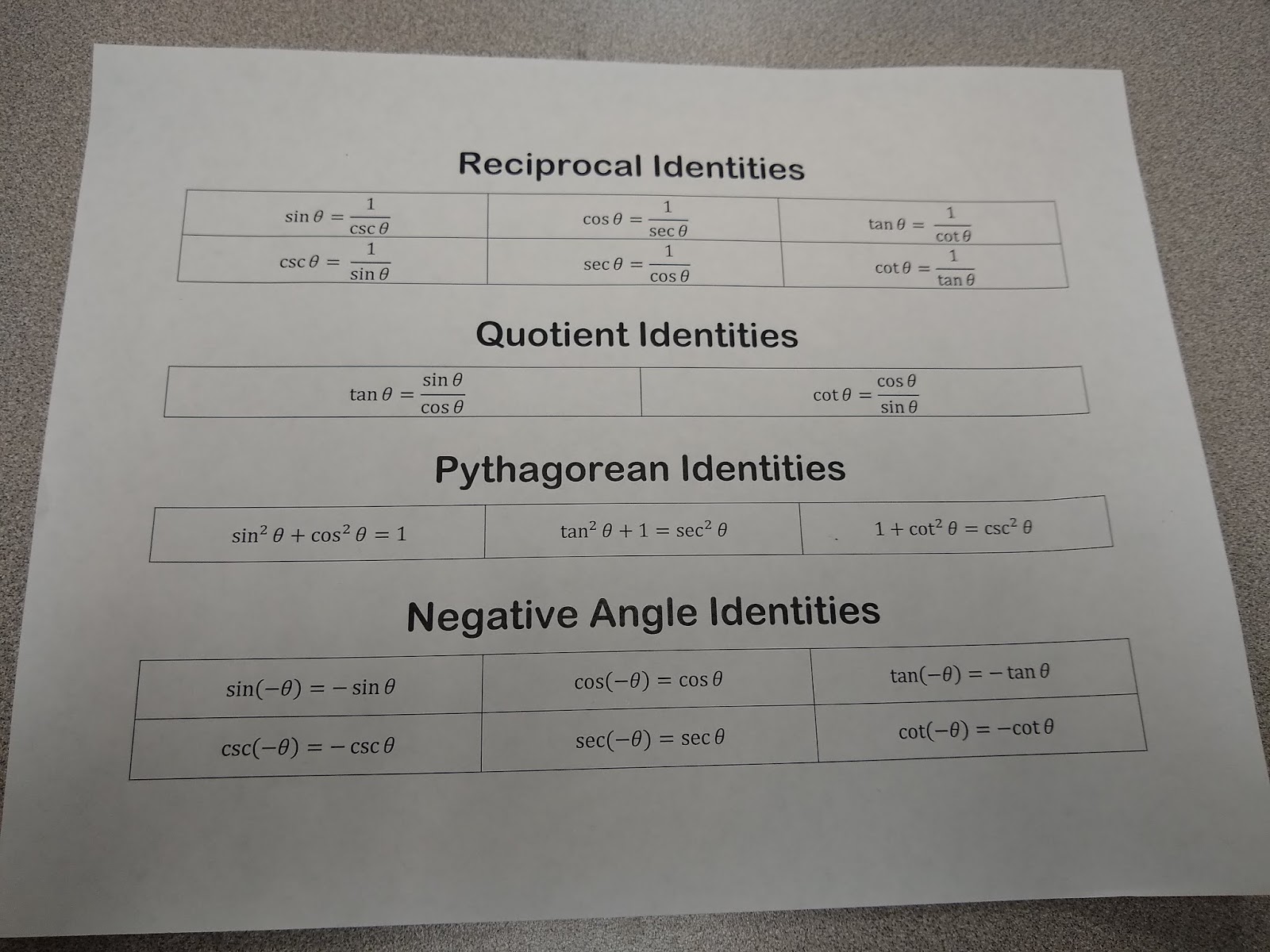
Friday, I did a group activity with my students that I’m super proud of. So, I’m excited to share it here on the blog today.
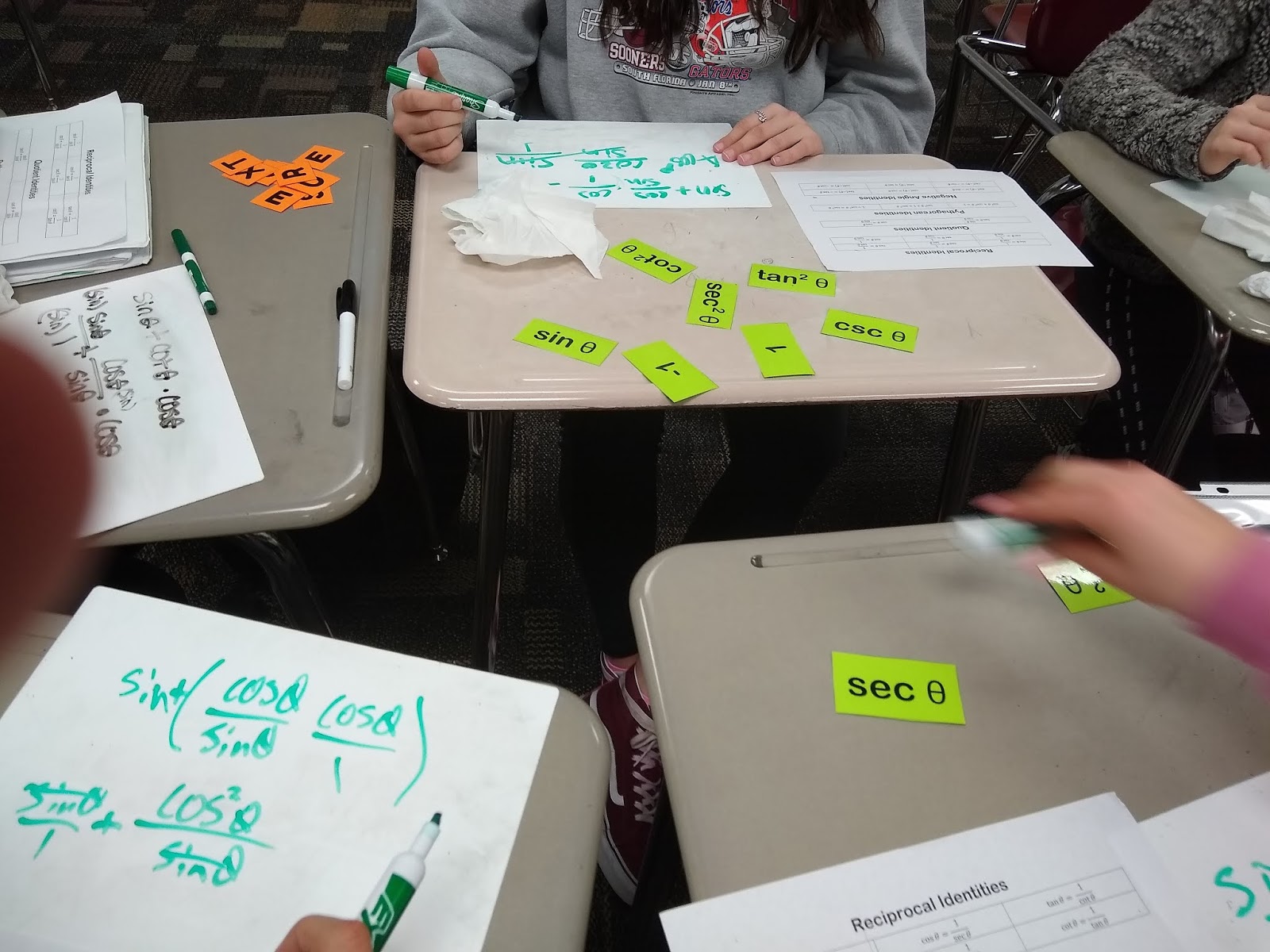
This activity started with a simple google search for a trig identity puzzle.
The first result (link no longer active) was an answer key to a joke worksheet. I found several other copies of the same worksheet online from different sources, so I’m not who to give credit to for the original worksheet. If you know who credit is due to, please let me know!
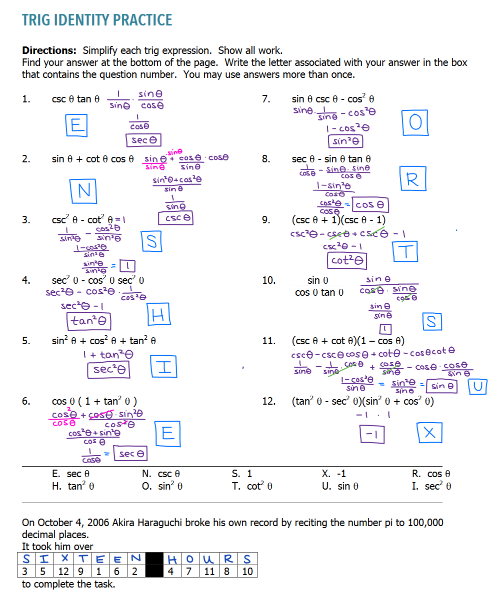
Immediately, I was mesmerized. Why don’t my answer keys ever look this nice?!? I was also amused by the fun fact that would be discovered by solving the problems. I’d just given my students a trig identity worksheet on Thursday, so I didn’t want to do the same thing again. Plus, I was reminded the last time we did a joke worksheet a few weeks ago that teenagers cannot resist shouting the answer at the top of their lungs when they figure out the answer!
The questions were great, so I decided a little activity make-over was in order. Here’s how I went about turning this joke worksheet into an activity that kept most of my groups engaged for almost the entire 45 minute period. A couple of groups did finish early, and a few groups did not finish the entire activity. I’ve had a good number of students out of class for various reasons, so many students were spending a good chunk of the hour helping their classmates understand how to verify trig identities because they had missed several days this week. So, I’m totally okay with the fact that these groups did not finish.
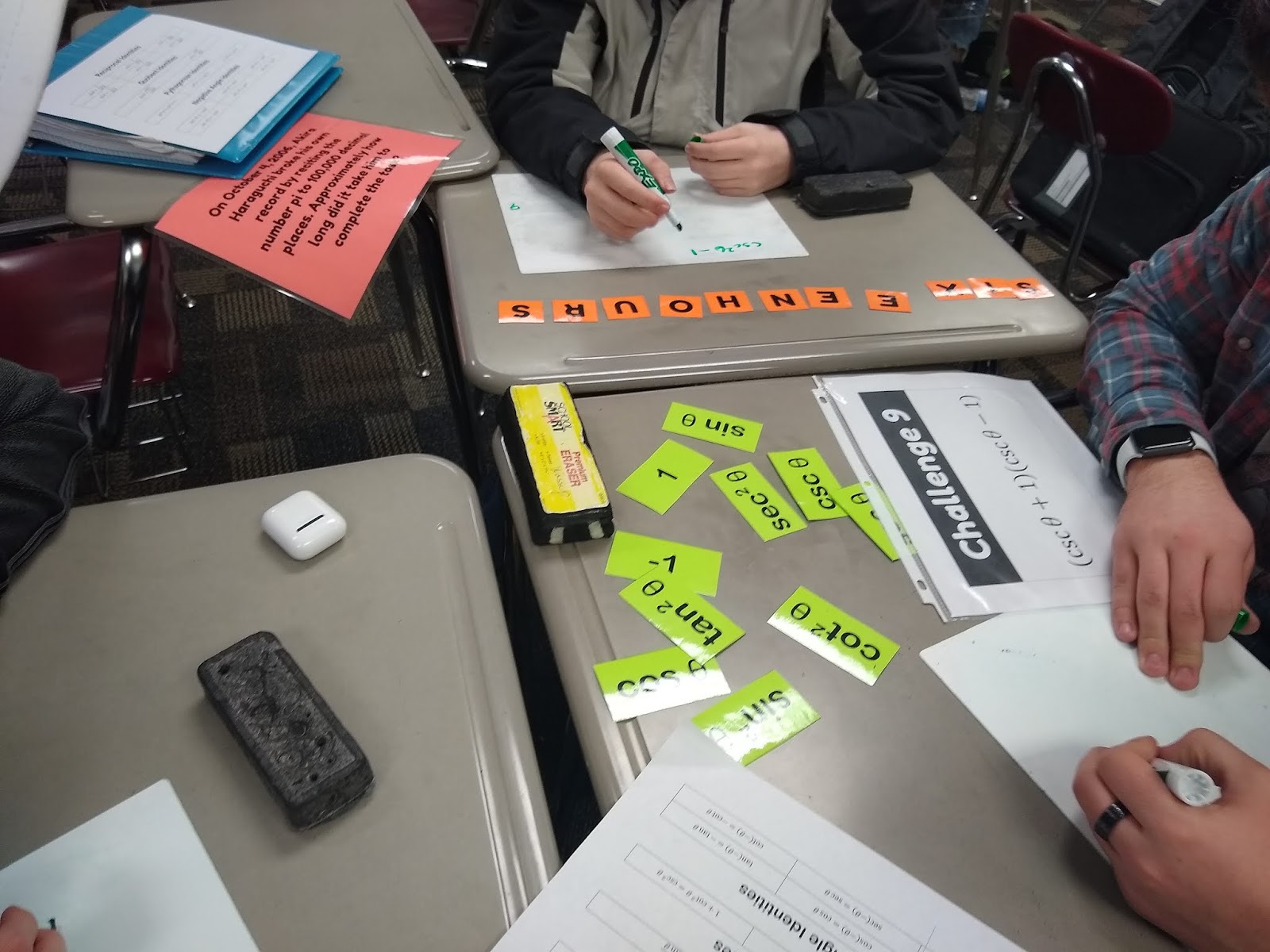
With a little bit of time, colored paper, and a laminator, I was able to turn this worksheet into a group activity that my students ended up comparing to Wheel of Fortune.
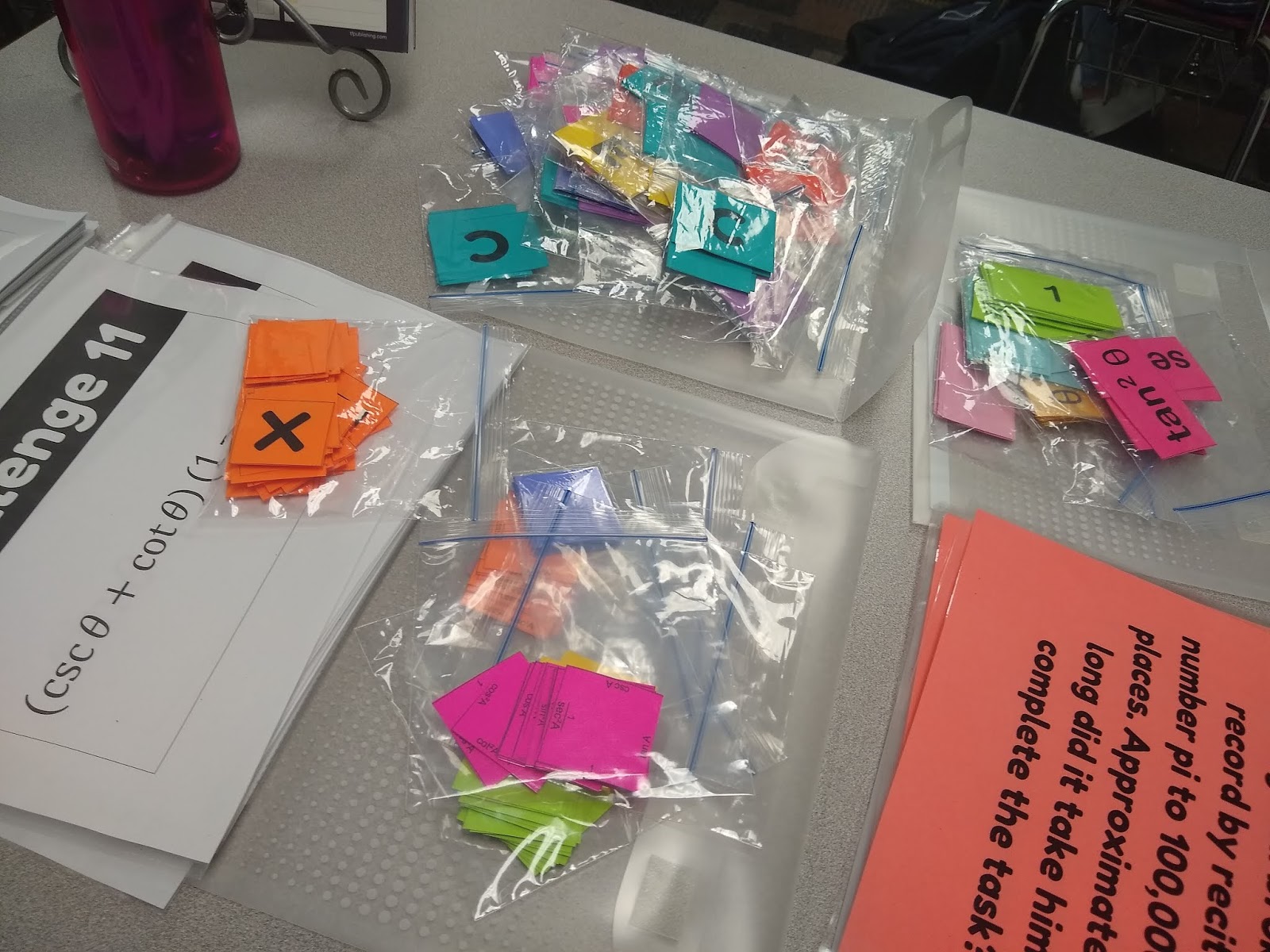
The twelve problems from the worksheet were each printed on a separate sheet of paper with a challenge number at the top that corresponded to the problem number on the worksheet.

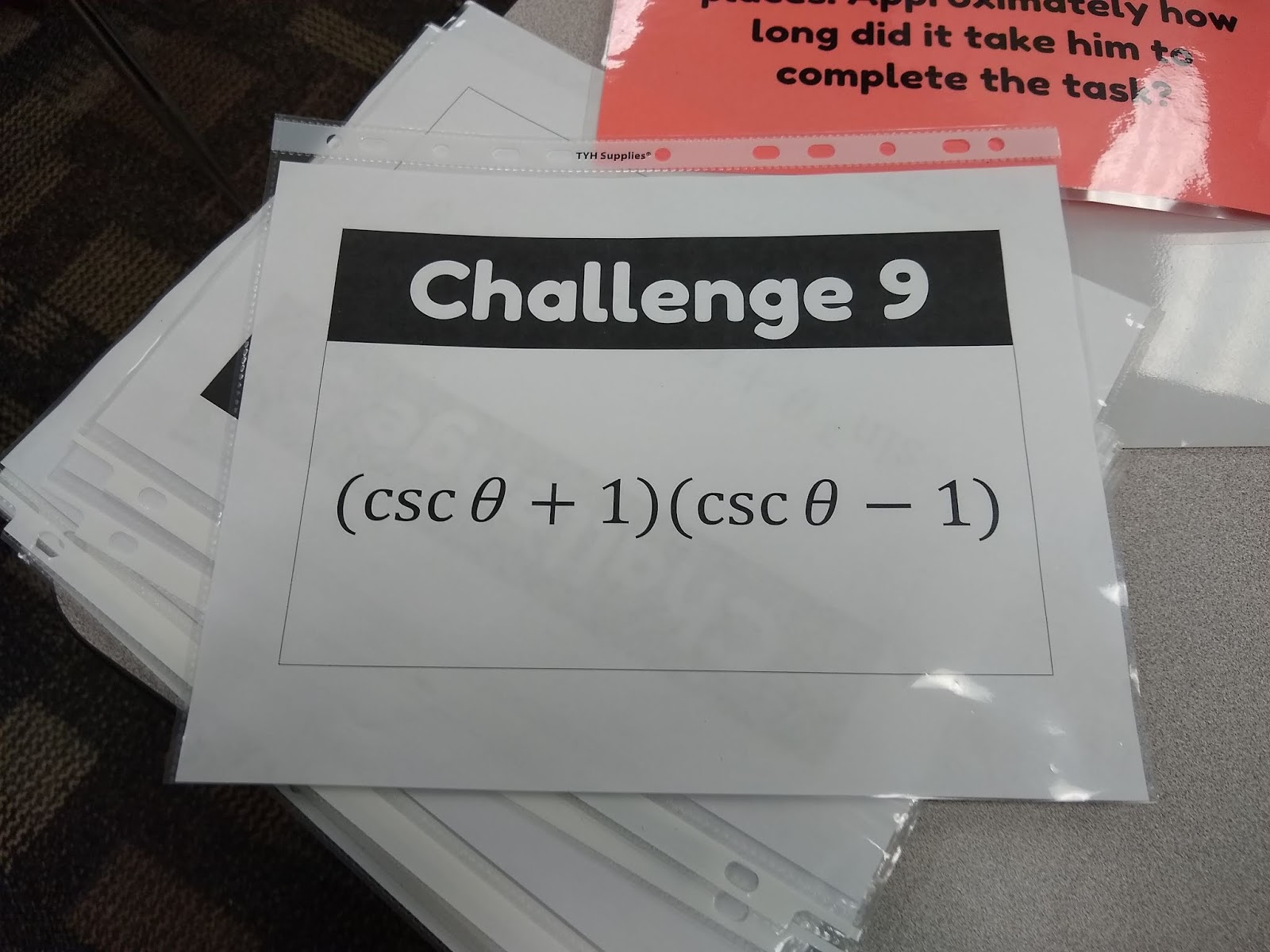
I ran out of time to laminate these challenge pages, so I just slipped them into sheet protectors.
MATH = LOVE RECOMMENDS…

A laminator is a MUST-HAVE for me as a math teacher! I spent my first six years as a teacher at a school with a broken laminator, so I had to find a way to laminate things myself.
I’ve had several laminators over the years. I currently use a Scotch laminator at home and a Swingline laminator at school.
I highly recommend splurging a bit on the actual laminator and buying the cheapest laminating pouches you can find!
This ended up working remarkably well. I printed two sets of the challenge cards so that two groups could work on the same problem at the same time if they needed to. This is a lesson I’ve learned the hard way from designing other activities this year.
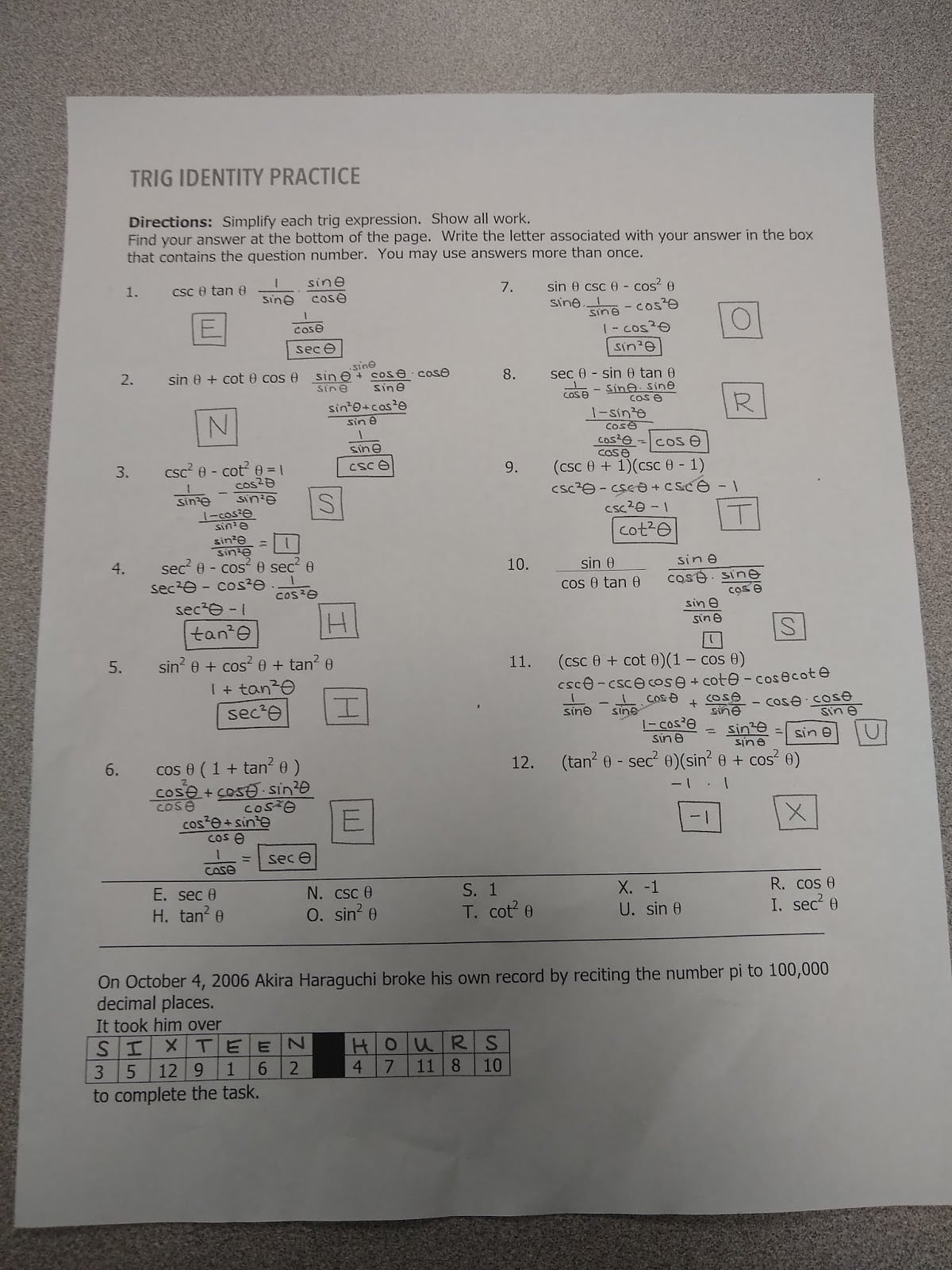
Because I kept the numbering from the worksheet, I was able to just print off the answer key I found online (link is sadly no longer active) and use it as my own personal answer key for checking students’ work during the group activity.
Next, I typed up the question that students would be attempting to answer throughout the activity. I laminated a copy for each group, but this was probably unnecessary. You could also just project the question for students to read/discuss before beginning the activity.
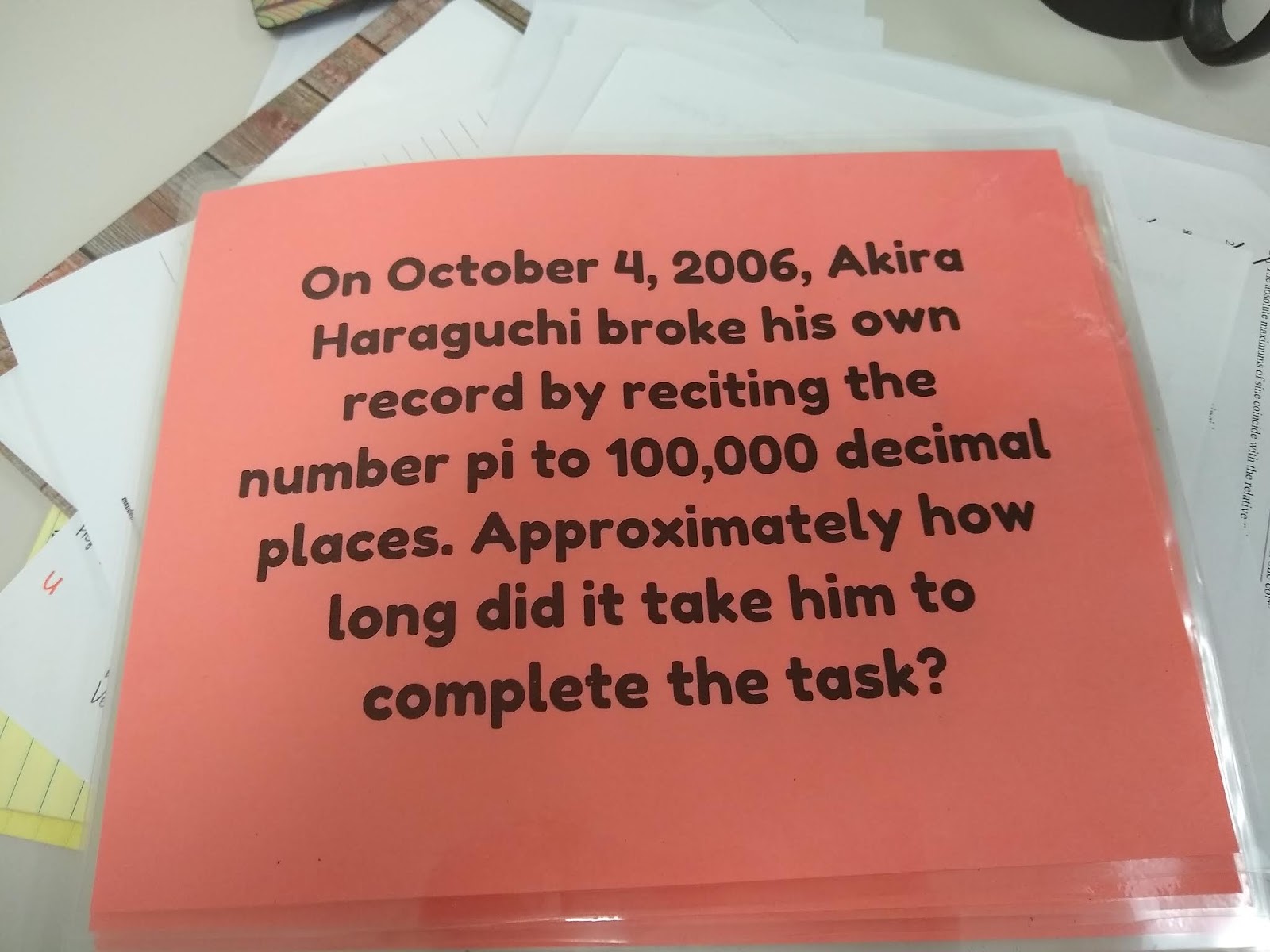
I had my students make predictions about what the correct answer might be before beginning the activity. Some of my students thought that figuring this out by performing calculations and estimations was the activity. I truly enjoyed listening to their attempts at answering this question.
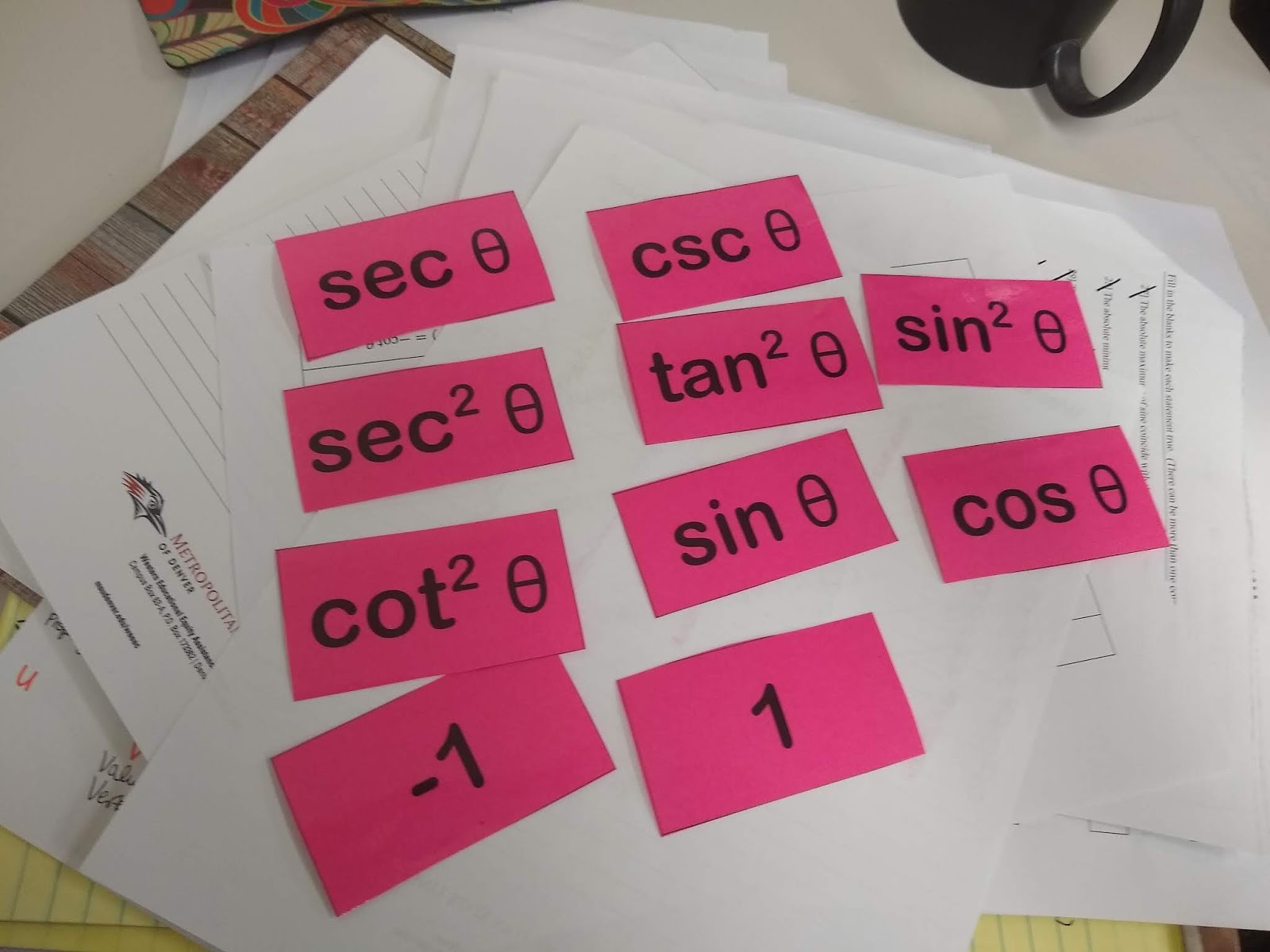
Each group received a bag of cards to serve as their “answer bank.” There are 10 possible answers and 12 challenges, so some answers may be used more than once. The previous day, we had verified trig identities where I told them exactly what the answer was. Students had to show the process to get from one side of the identity to the other side. This activity was more complex in that students didn’t know exactly what they were working towards. Instead, they were simplifying the given identity until it matched one of the answers in their bank.
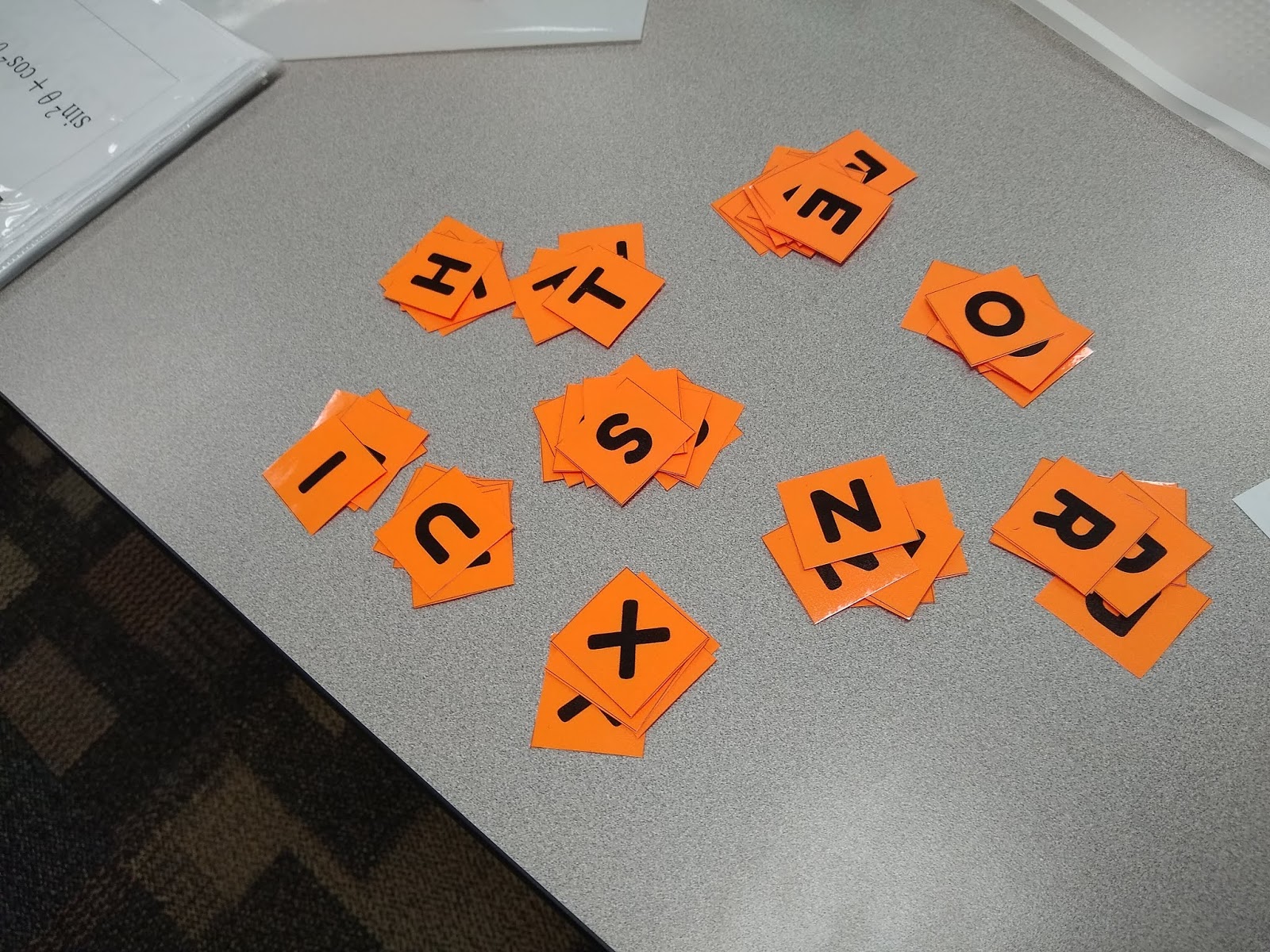
The last element of the activity that I had to create was the letters that students would earn with each completed challenge. I put them in piles on my desk by letter to make handing them out easier.

Each completed challenge would earn them a specific letter (as specified on the original joke worksheet). One more thing that I wish I would have created would be a tracking sheet for groups to keep track of what challenges they had and hadn’t completed. The thought had crossed my mind while creating this activity, but I got side tracked and it ended up not happening.
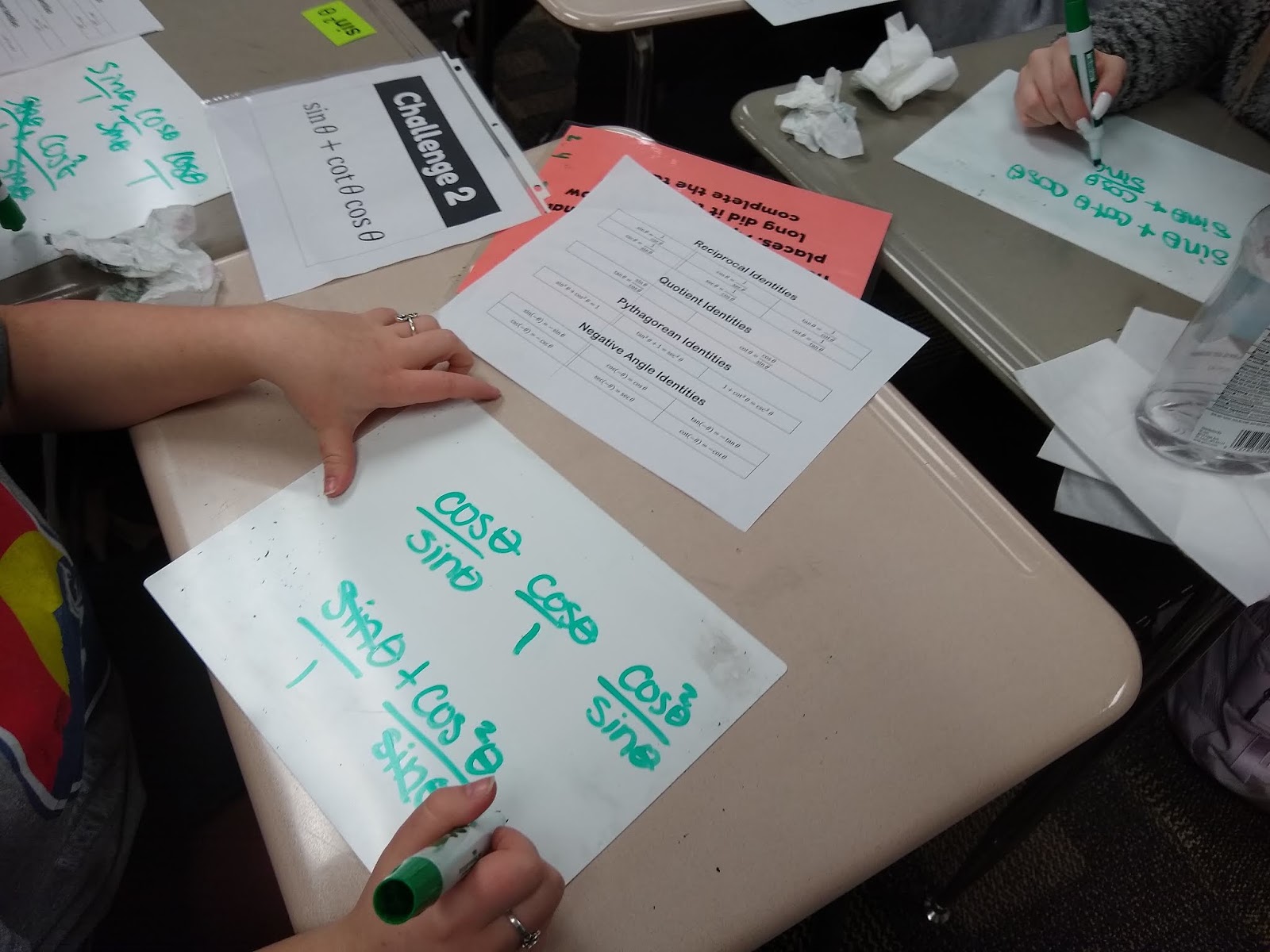
I had one student in each group write the numbers 1-12 on their dry erase board so they could erase/mark out each challenge as they completed it. This worked well enough, but a dedicated tracking sheet would have been nice. It would also be a good way to take a grade for this activity if you wanted to.
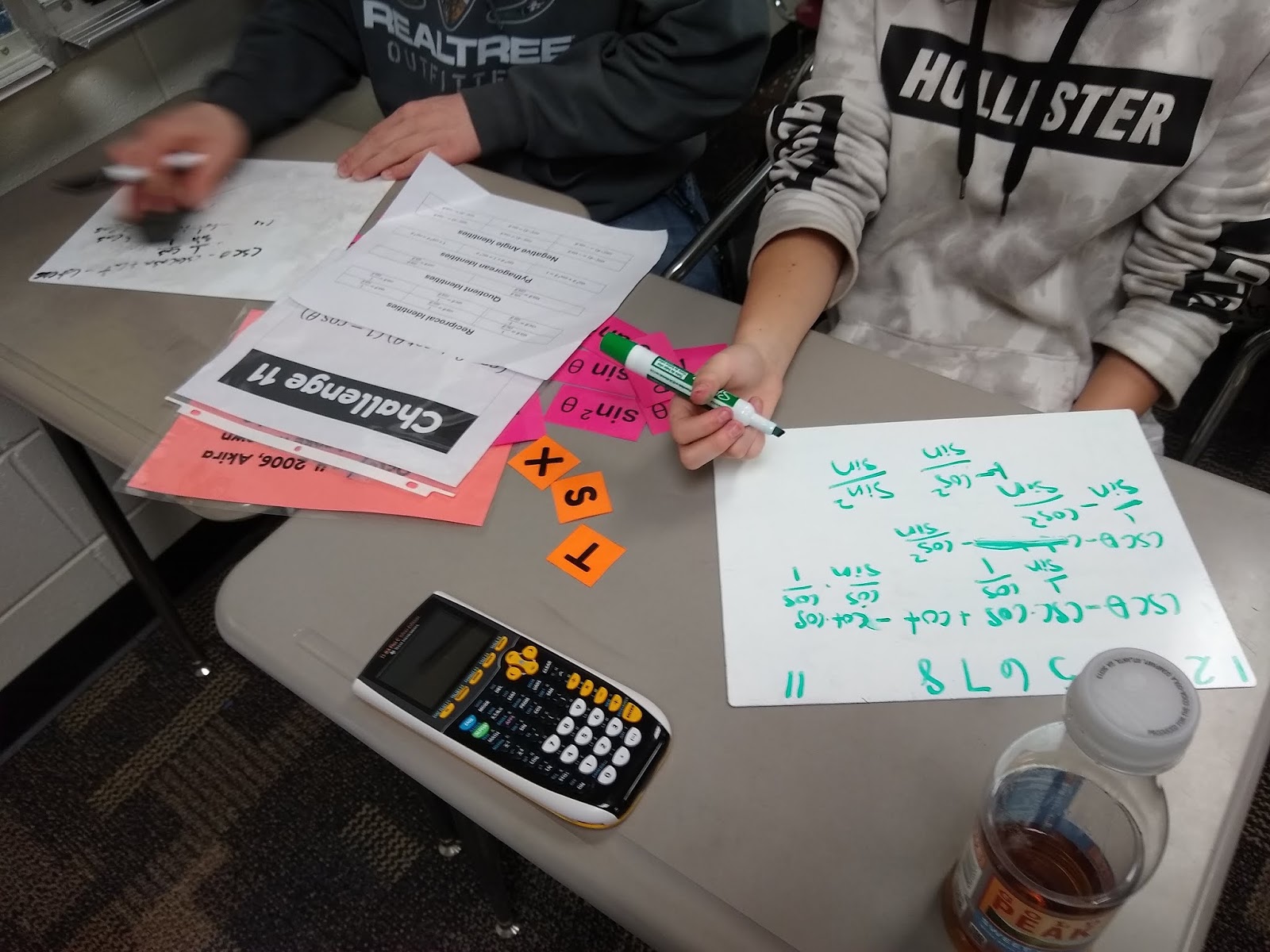
After we discussed their guesses to the question at hand (On October 4, 2006, Akira Haraguchi broke his own record by reciting the number pi to 100,000 decimal places. Approximately how long did it take him to complete the task?), I handed each group a different challenge card to begin. Each group tackled their problem on their individual dry erase boards.

They continued rewriting and simplifying their given expression until it matched one of the 10 expressions in their answer bank.

When a group thought that they had successfully completed a challenge, they would bring the challenge card and the corresponding card from the answer bank to my desk. If they were correct, I would give them a letter to help them answer the question. If they were incorrect, they returned to their desk to rework the problem with their group.

I would step in and help groups as necessary. Sometimes I would examine their work. Other times, I would give them a helpful hint in how they might approach a certain problem.
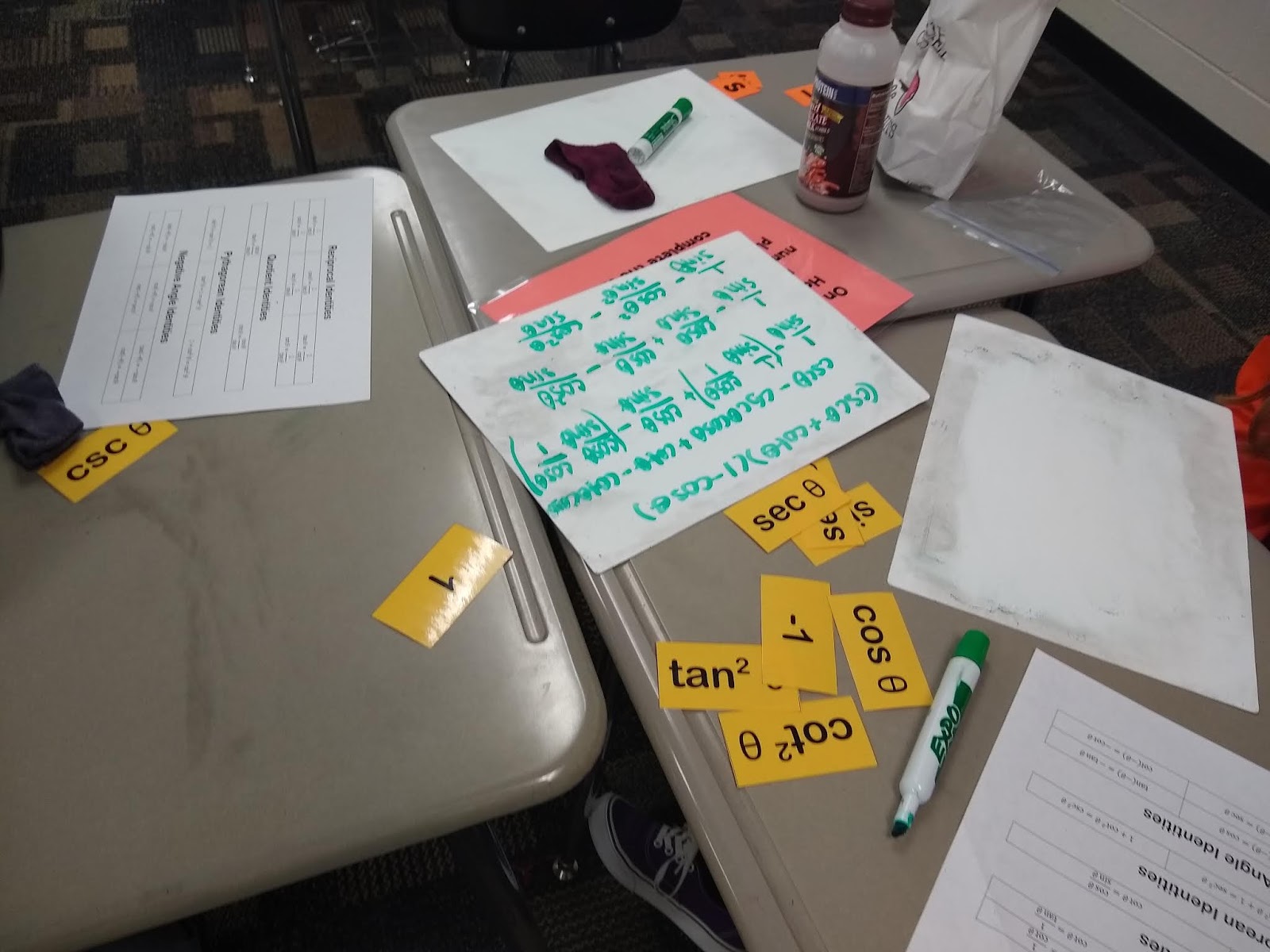
The most amusing part of this activity was getting to watch them guess what the answer to the puzzle might be as they started gathering letters.

Some groups immediately tried to arrange their letters to form the answer. And, they revised their guess with each new letter. Other groups, tossed the letters in a pile and focused solely on completing as many of the challenges as quickly as possible.

I do believe that I got more engagement from my students with this activity than I would have gotten if I had just handed out the worksheet as it was written. I definitely got a better sense of what my students understood and what they were still struggling with than I would have from a pile of papers to grade. I look forward to creating more activities like this in the future!
I also created a Trig Identities Matching Activity and a Verifying Trig Identities Worksheet that might be of interest.
Trig Identities Group Activity Files
You might also be interested in the Trig Identities Cheat Sheet/Reference Sheet I give my students to use during this activity!

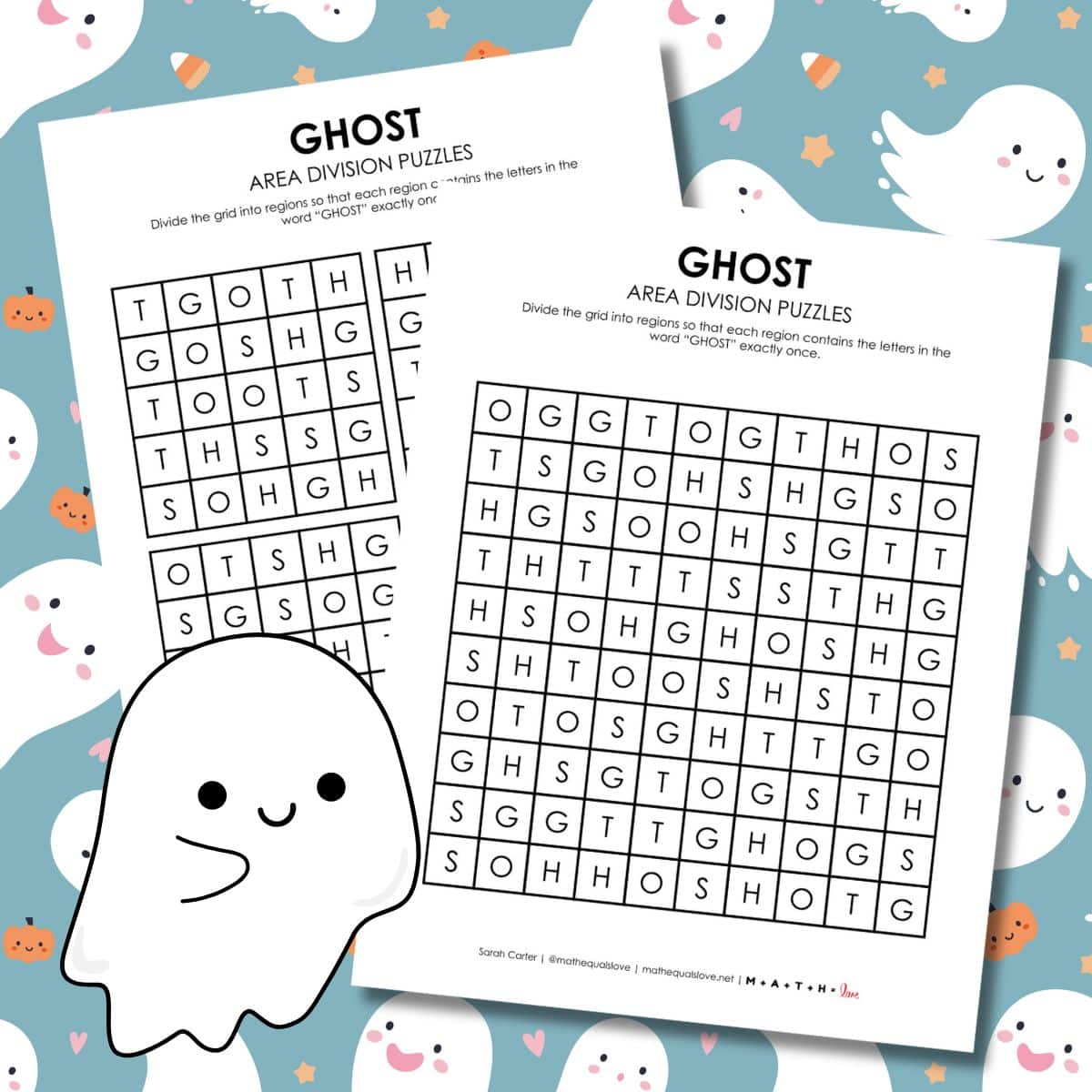
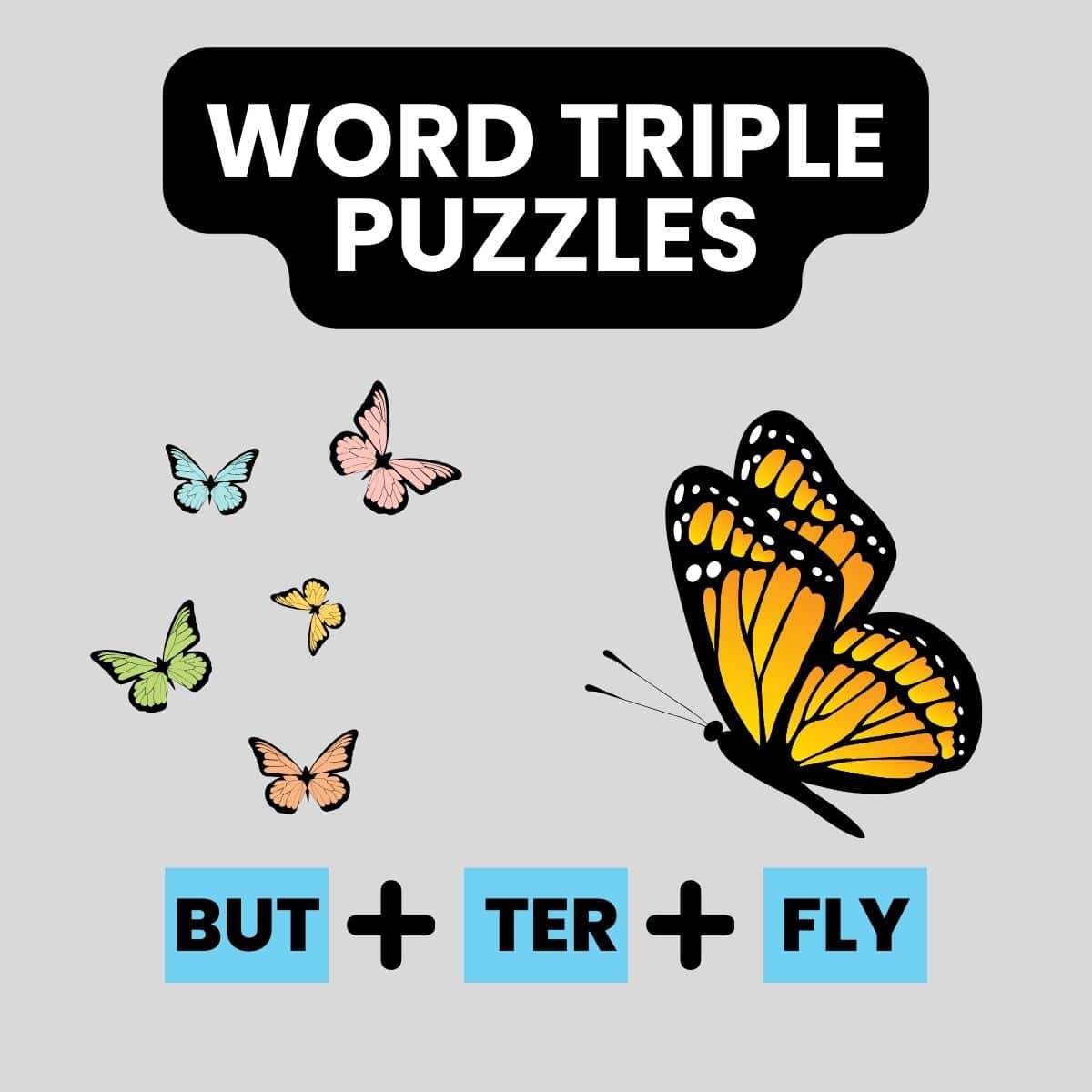

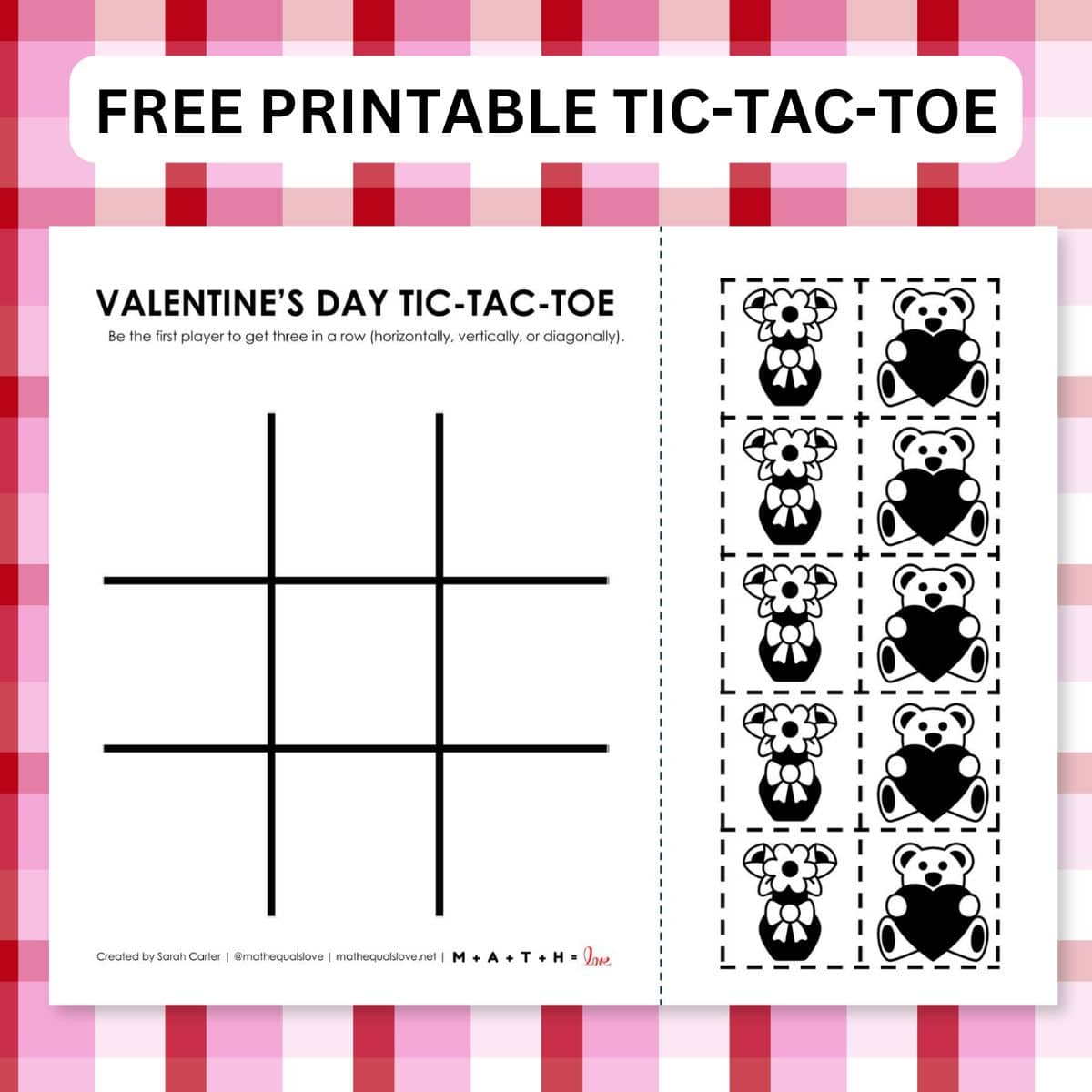
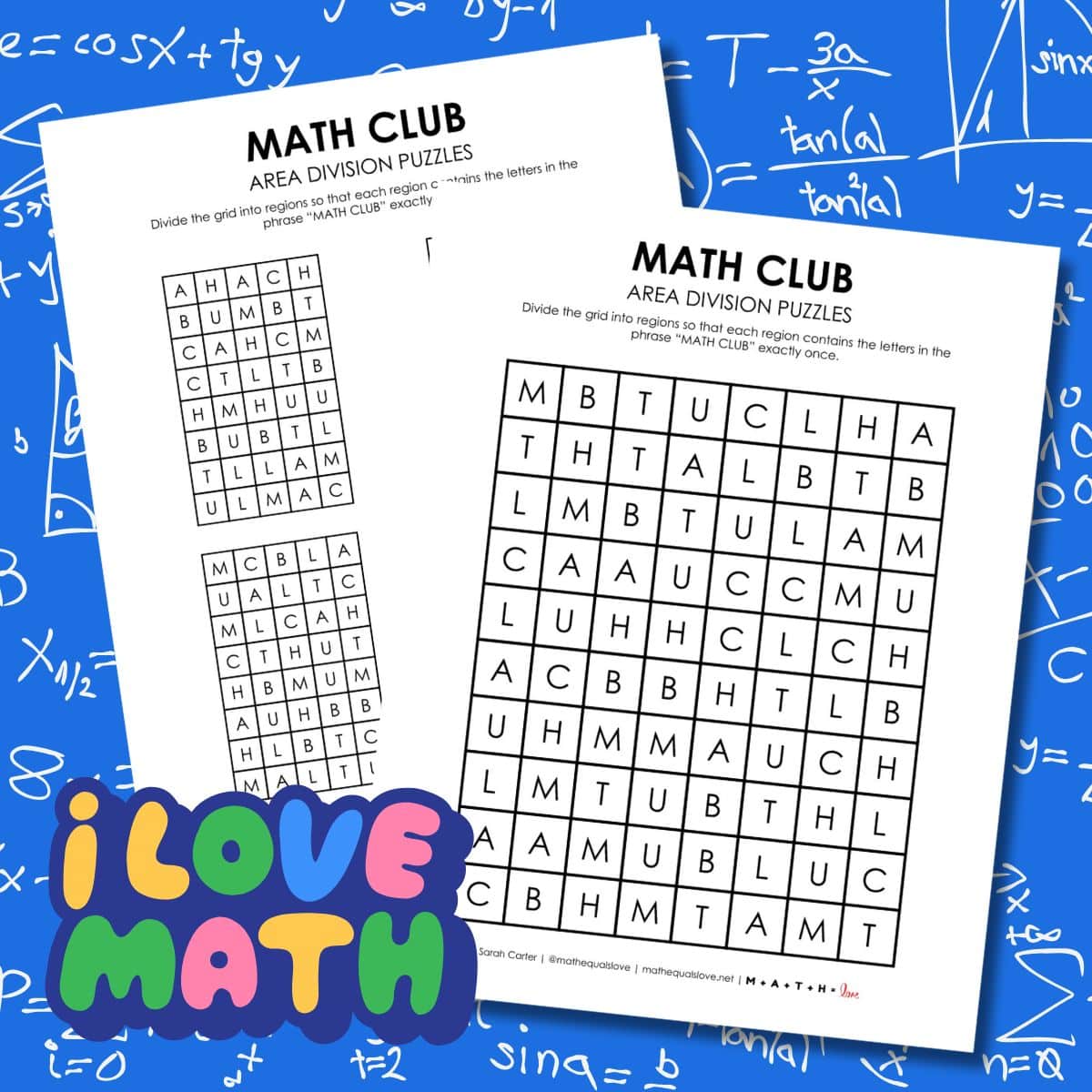
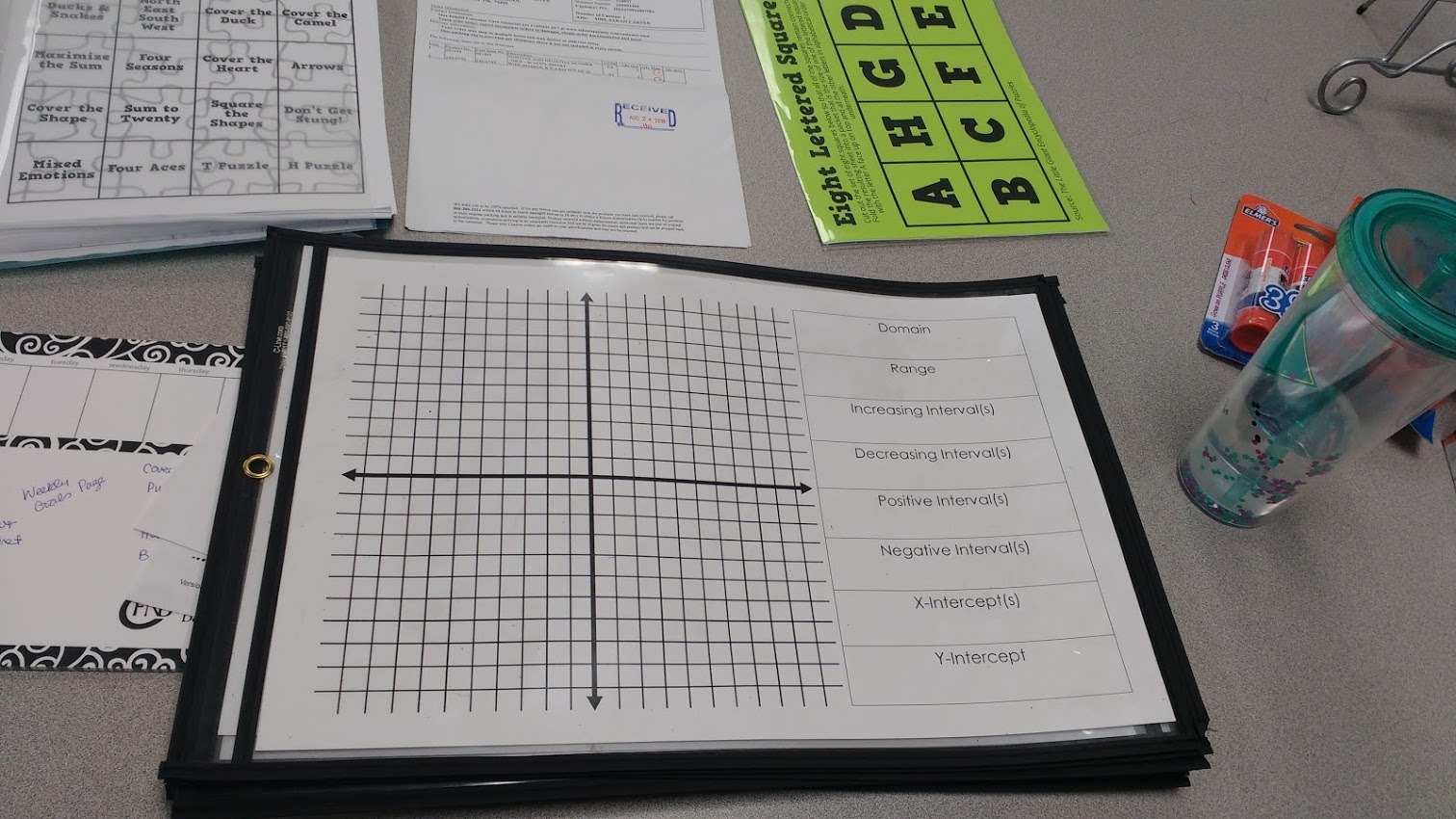
Thanks so much! This looks awesome!
I cant wait to try something similar with a Pizzazz sheet!
So from the student's end, they don't know the order of the letters. They need to rearrange the pile to form the answer,right?
Great activity.
I love how you took a simple worksheet and changed it to feel more like a game like activity. It also seems that this type of transformation promoted more student to student collaboration which might have not happened if students where just simply completing a worksheet. I can't wait to try this with my students.